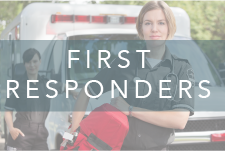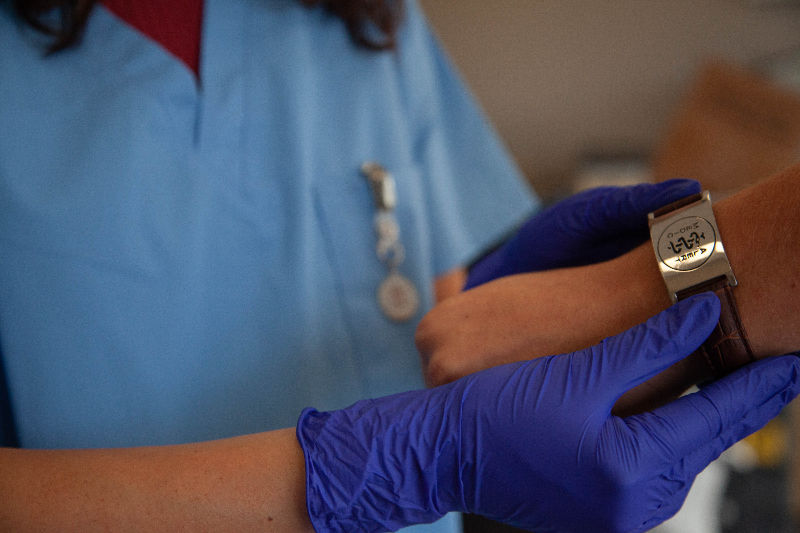How First Responders Preparing for Trauma to Create Safety Net
- Nov 16, 2021
- 5 min read
Updated: Nov 3

First responders face danger every day, and while their service is treasured, it's a line of work that exposes them to many types of trauma. Being prepared for this possibility is a crucial step towards personal safety. We'll explore the importance of creating a safety net and how to develop one while still managing the responsibilities of the active line of duty.
What does a first responder's safety net include?
A first responder's safety net is a unique combination of elements designed to help them process trauma and manage stress. It can include support from family and friends, designated self-care spaces, consistent communication with people outside of their work, and preemptively finding support communities or professional therapeutic facilities.
There's more to understand about the prevalence of trauma among first responders and the importance of a safe outlet. Continue reading to learn how to deconstruct the stigma surrounding mental health and how to prepare for trauma to ensure a long and healthy career in the line of duty.
The Need to Create an Early Safety Net for First Responders
First responders are placed on the front line of danger every day. While their service is treasured in both one's communities and nationwide, it is still a dangerous line of work that leaves them prone to many different types of trauma.
Approaching one's job with the expectation of trauma can be dangerous. Being prepared for this possibility can actually promote a degree of safety when it comes to tackling the challenges that first responders face. However, creating this safety net ahead of time is complicated. There are multiple different factors to consider when developing one's personal safety net while still tending to the responsibilities of the active line of duty.
The Prevalence of Trauma
It is incredibly difficult to escape all of the different types of trauma that first responders face. Acknowledging that trauma is a very real and detrimental possibility for first responders is the first step in creating a better understanding of one's need for a feeling of safety. For some, running into burning buildings, confronting potentially armed and dangerous people, or heading onto the scene of natural disasters create a very real, tense, and overwhelming sense of trauma.
However, these are not the only ways that trauma can be felt. Vicariously seeing or hearing about injuries or fatalities can be a potent source of trauma, meaning one does not need to be on the scene of a tragic event to experience the traumatic nature of the job. Having an emotional safety net in place and ready can help each individual quickly begin to process these experiences. This can work to strengthen one's resilience while continuing to commit oneself to the protection of one's community.
Embracing the Need for a Safe Outlet
First responders are still people, and the need for safety and camaraderie is paramount. Stresses will continue to build if not provided with an effective outlet. While processing these emotions can be exceptionally difficult, there can be many destructive outcomes of bottling up these emotions and denying their expression.
The development of anxiety disorders, panic, depression, PTSD, or turning to the use of drugs or alcohol are common ways that one's stress may manifest if left on its own. Each of these outcomes can further complicate one's emotional state. This may lead to an increase in risky behavior, compromised decision-making, and even potentially opening one up to further traumas.
Preparing for Trauma for First Responders: What Is a Safety Net?

A first responder's safety net is something that is wholly unique, but comprised of a few different elements. As one begins or continues their career as a first responder, being prepared for the potential dangers and damage to one's mental health is crucial. Some people may utilize supportive family members and friends to help create barriers between one's work and home life.
An example of this can include agreeing to not bring up work stresses at the dinner table. Others may establish rooms for self-care where one cannot be disturbed if it was a particularly stressful day. Some may approach their safety net by creating a constant flow of communication with friends and families outside of the professional sphere. Daily text messages, phone calls, or emails can help an individual further separate their personal and professional lives.
In other cases, individuals may preemptively find support communities for first responders or professional therapeutic facilities. Doing so can be part of preparing trauma for first responders responses in advance, making it easier to manage the emotional weight of the job. One's safety net is a collection of trusted outlets they have consistent access to at any time, regardless of how they are feeling.
Deconstructing a Stigma
Not only is creating a safety net important for one's own mental and emotional health, but it is also a necessary practice for deconstructing the stigmas that surround words like “addiction” or “mental health.” Unfortunately, there is still a great deal of misinformation about these subjects in circulation, and one's communities may view reaching out for assistance on these fronts as some kind of admittance of weakness.
These fallacies can be hard to process, and one may fear the social and professional repercussions of reaching out for help. This can be especially scary when one's role as a first responder doubles as an image of strength and protection. However, reaching out to support groups, peers, and professionals can all work to destigmatize these notions.
Doing so can also normalize the practice of asking for help to process these traumatic events while validating and acknowledging one's feelings and experiences in the line of duty. This can ultimately help first responders continue to serve their communities while allowing them to treat themselves fairly and tend to their emotional needs.
Frequently Ask Questions:
• What types of trauma do first responders face?
First responders face many types of trauma, including running into burning buildings, confronting dangerous people, and being on the scene of natural disasters. They can also experience trauma vicariously by seeing or hearing about injuries or fatalities.
• Why is having a safe outlet important for first responders?
Having a safe outlet is crucial because bottling up emotions can lead to destructive outcomes like anxiety disorders, panic, depression, or turning to drugs or alcohol.
• What are some examples of a first responder's personal safety net?
A personal safety net can include supportive family and friends, designated self-care rooms at home, consistent communication with people outside of work, or preemptively finding support communities or therapists.
• How does creating a safety net help deconstruct mental health stigma?
Creating a safety net is a necessary practice for deconstructing stigmas about mental health. Reaching out to support groups and professionals normalizes asking for help and validates one's feelings and experiences.
• How does preparing for trauma help first responders?
Preparing for trauma ahead of time can help first responders manage the emotional weight of their job more easily, allowing them to continue to serve their communities while tending to their own emotional needs.
The journey to healing from the trauma of being a first responder can be challenging, but you don't have to walk it alone. We at Chateau Health and Wellness Treatment Center are here to provide the compassionate support and specialized care you or your loved one needs. Our team of experts is dedicated to helping individuals like you navigate the complexities of trauma and build a foundation for a healthier, more resilient future. We invite you to take the first step toward recovery with us. Please call us at (435) 222-5225 to learn more about how our personalized programs can help you or your family heal and thrive.

About The Author
Ben Pearson, LCSW - Clinical Director
With 19 years of experience, Ben Pearson specializes in adolescent and family therapy, de-escalation, and high-risk interventions. As a former Clinical Director of an intensive outpatient program, he played a key role in clinical interventions and group therapy. With 15+ years in wilderness treatment and over a decade as a clinician, Ben has helped countless individuals and families navigate mental health and recovery challenges.








